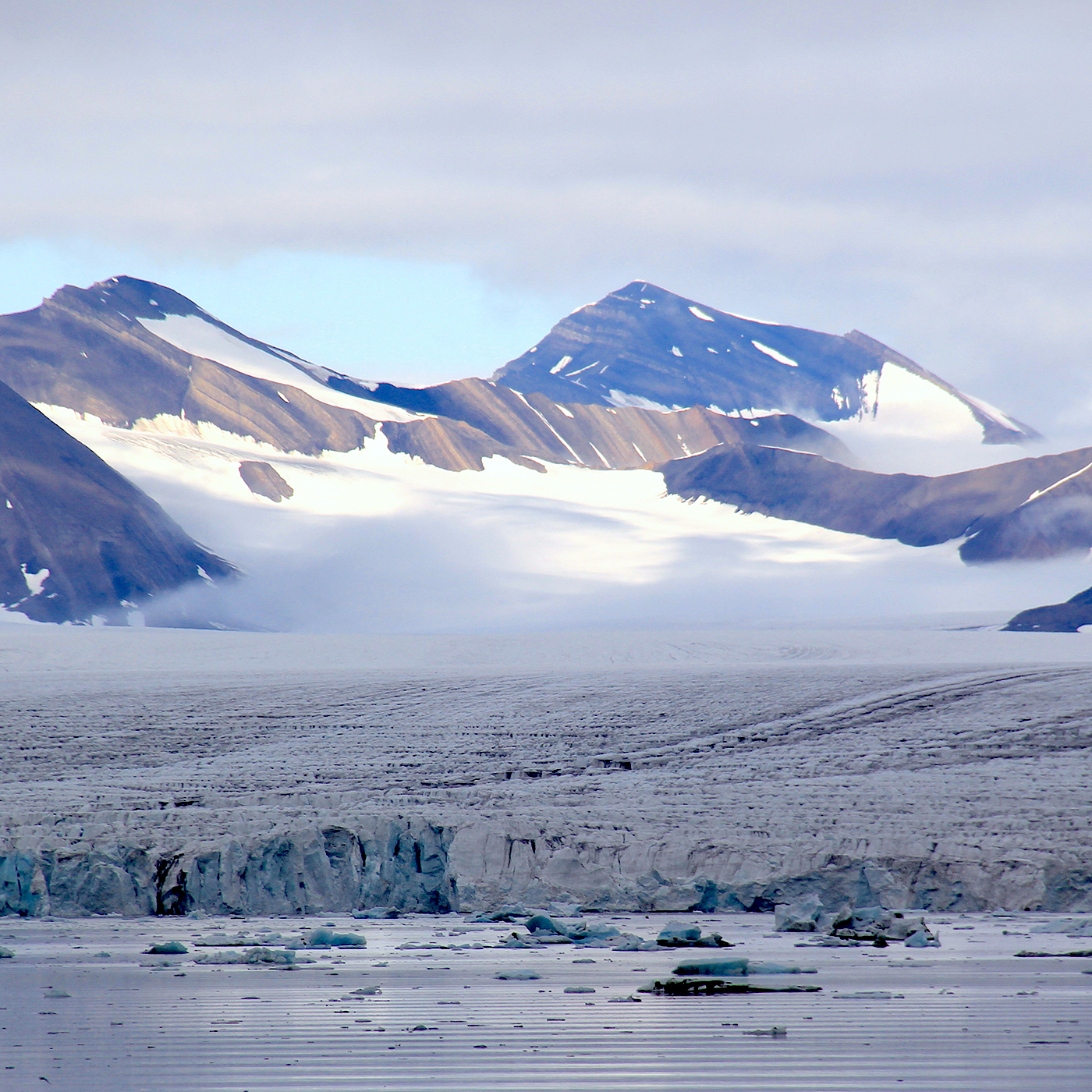Spitsbergen glaciers are melting
Glaciers covering approximately 60% of the Svalbard archipelago have been systematically melting since the 1980s. "If the current warming rate continues, it would be extremely difficult to avoid further mass loss of Svalbard glaciers in the future," commented the researchers in a paper recently published in Nature Communications. Among the authors of the article is Bartłomiej Luks, PhD from the PAS Institute of Geophysics.
View of Ostra Bramatoppen across the Storbreen glacier, Spitsberegn, during research expedition in 2015 (photo by Willem Jan van de Berg, Utrecht University)
Glaciers can stand the annual temperature variations as long as they are covered by firn. This layer of last year, granular snow, which accumulates at the top of the glacier, protects the glacier from melting. Porous snow acts like a sponge absorbing nearly half of the meltwater in periods of increased surface melting (summer) and allowing meltwater to refreeze in winter instead of running off into the sea. Moreover, the white firn layer reflects much more sunlight than the darker bare ice underneath.
Svalbard’s firn line retracted to a critical altitude
Using a high-resolution climate model, scientists have recently showed that Svalbard’s firn line has retreated to a critical altitude in the mid-1980s. The fact that it is now only 450 meters above sea level makes Svalbard's glaciers very vulnerable to further warming and summer melting. In the warm summer of 2013, the meltwater runoff more than doubled compared to previous years. In July 2020, Svalbard again experienced record high temperature. "If the current warming rate continues, it would be extremely difficult to avoid further mass loss of Svalbard glaciers in the future," commented the authors of the article that has just appeared in Nature Communications. We should not forget that glaciers provide people with freshwater and the loss of glacial ice reduces the amount of our most important resource. Moreover, melting glaciers are causing sea levels to rise, which in turn may have catastrophic consequences.
PAS research in Spitsbergen
The aforementioned study was based on glaciological data from the Polish Polar Station at Hornsund, Spitsbergen. For over 30 years, the Institute of Geophysics of the Polish Academy of Sciences has been monitoring the surface mass balance of the Hansa glacier located in the vicinity of the Station. Every year, the new data are sent to World Glacier Monitoring Service database. The article was co-authored by Bartłomiej Luks PhD from the PAS Institute of Geophysics.
Read the full article “Low elevation of Svalbard glaciers drives high mass loss variability” in Nature Communications.

